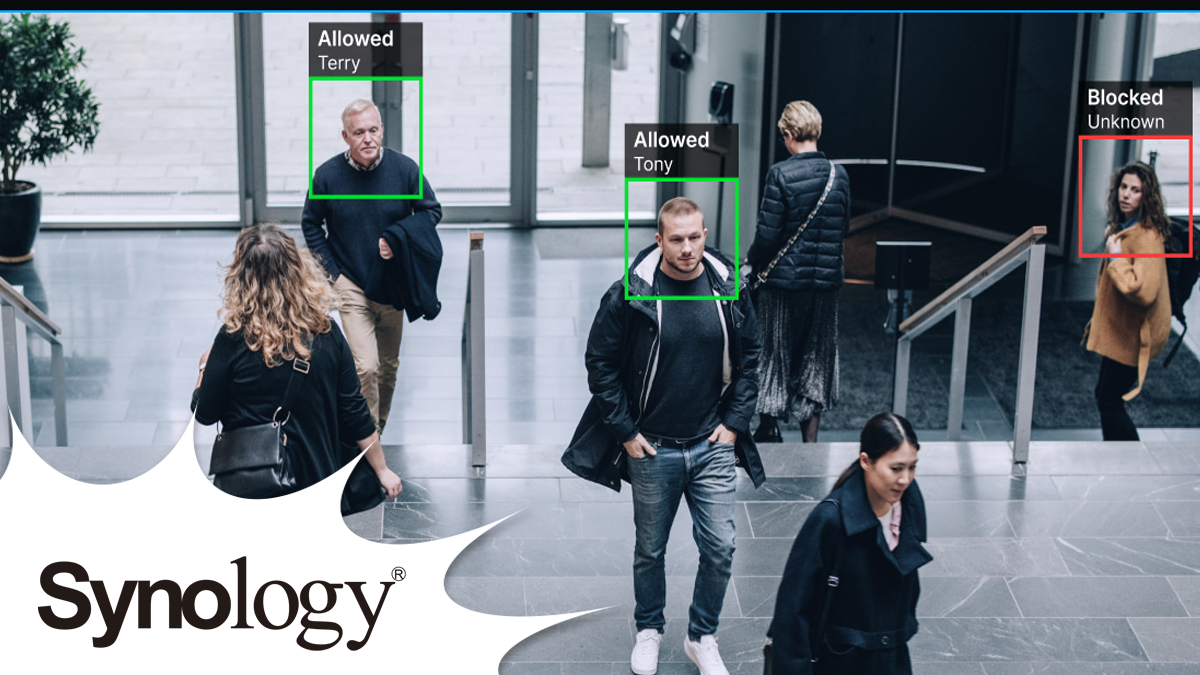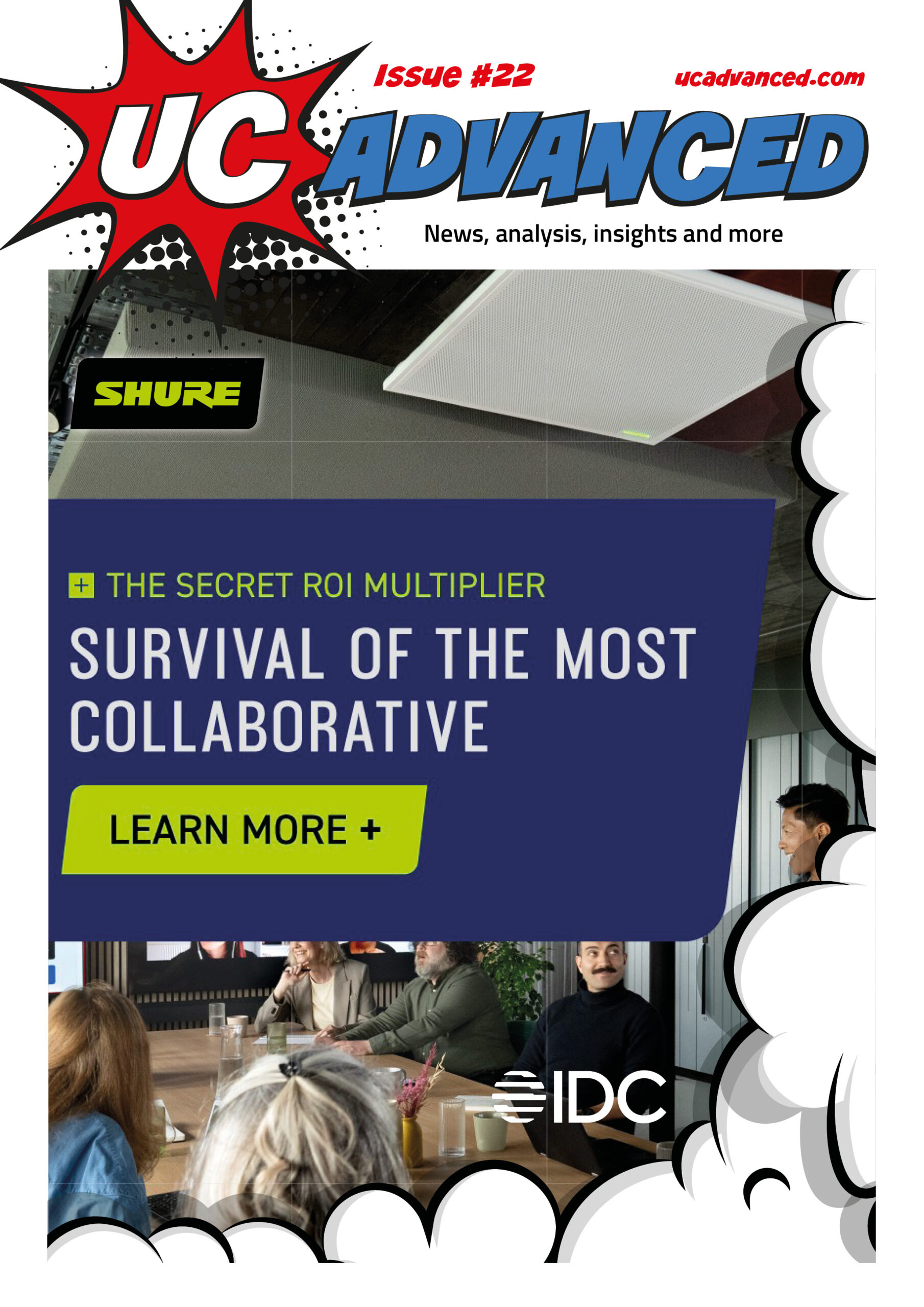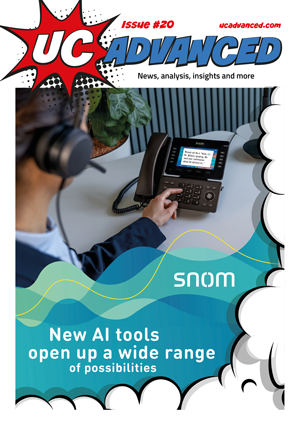UC Advanced caught up with Jeremie Francois, Sales Director, from Synology, to discover what end users look for in a surveillance system, in particular cameras facing entry points, and what MSPs and resellers should be aware of.
There has been a 57% spike in interest, over the past three months, February to April 2025, in the search volume for the security surveillance category on Stock in the Channel’s platform, which includes cameras, network surveillance servers and Network Video Records (NVRs). The sharp rise in searches points to an increasing awareness and demand for security surveillance devices, and one reason could be for SMBs in urban areas looking to scale their monitoring solutions based on the types and price points of devices being searched.
Another reason why security cameras may be on the rise is due to advancements in AI, leading to an extended range of features never before available. It is now possible, for example, for AI security cameras to differentiate between people and vehicles, thereby helping to minimise the number of false alarms. The beauty of most surveillance systems is that they operate 24/7, so longer hours than a human and less costs, offering more viewpoints than two eyes, but they do require a few things to work – storage space, power and connectivity.
Deployment scales from a simple entry doorbell camera to a fully integrated multi-door/area solution for businesses or institutions. The specific components depend on the end users’ needs, such as threat level, site layout, budget and integration. Resellers or MSPs with limited DIY knowledge, or those with limited or no skills in mounting cameras, configuring apps and recorders and unfamiliar with running low-voltage wiring, should consider pairing with a partner who has a strong command of network basics such as dealing with router set ups and IP addresses.
Synology, offers a complete range of surveillance cameras and networking equipment, and currently has one of the top trending surveillance systems, the Synology VS600HD, on Stock in the Channel.
End User Considerations
A potential dealbreaker for users when it comes to entry surveillance systems, for instance, is the technology’s compatibility with the rest of their systems. If the costs of buying a new system also mean having to make expensive changes to other areas of their network infrastructure, then the perceived value is quickly going to diminish.
Jeremie shared, “When selecting an entry surveillance system, compatibility is key, ensuring the system works seamlessly with any existing setup and is flexible enough to support future upgrades. At Synology, we build our systems with broad compatibility in mind, supporting a wide range of IP cameras via ONVIF and third-party integrations.”
Other important factors end users consider are:
🕵 Scalability – Entry-level shouldn’t mean limited. Your chosen system should let you start small and grow as needed, via both cloud, onsite storage and a hybrid of the two.
🕵 Ease of use – An intuitive setup and interface go a long way, especially for smaller businesses or first-time users.
🕵 Storage flexibility – Whether you need local, hybrid, or direct-to-cloud storage, Synology offers solutions to match users’ data retention and privacy needs.
🕵 Security and privacy – Encrypted transmissions and secure logins are essential.
🕵 Remote access – Mobile apps and browser access enable monitoring and alerts to be received, with the ability to manage the system from anywhere.
Understanding Customers’ Needs
MSPs are recommended to start at the very beginning with customers by assessing the customers needs. The desire comes from varying places of reactivity to proactivity, such as “Oh no, we’ve been robbed”, to “I suspect staff theft” to “My insurance policy insists I have something in place” or “I need to protect my assets or staff”.
Equally, both MSPs and the client should have a thorough understanding of employee and customer privacy and GDPR and a balance must be maintained between consent, legal obligation, protection of vital and legitimate interests. SMBs must comply with laws on surveillance, such as posting signage about camera use or limiting recording in private areas such as restrooms. Non-compliance can result in legal action or fines. Thought should also be given to future-proofing the investment. Today’s needs can drastically change
as business needs change or clients scale up.
Jeremie states, “Synology’s platform is built for seamless scalability across our entire ecosystem, including surveillance. Users can set up QuickConnect for an effortless and secure way to access their NAS remotely, including Surveillance Station, with additional connection methods available for more advanced setups.”
Matching Needs to Features
When it comes to safeguarding entry points, the right features can make a world of difference. Asset owners aren’t just looking for a camera – they’re looking for assurance, reliability, and actionable data. Cameras tailored to monitor doors and access points need to reduce false positives while providing clarity and control in real time.
As Synology put it, modern features such as People and Vehicle Detection dramatically reduce unnecessary alerts from movement that doesn’t matter, like swaying trees or passing wildlife. Night-time security is supported with Night Vision capabilities reaching up to 30 metres, ensuring visibility regardless of lighting conditions.
For businesses that want an added layer of responsiveness, Intrusion Detection and Auto Tracking offer proactive monitoring – users can set specific zones to trigger alerts, and the camera can track individuals across the field of view, improving context and response time. Meanwhile, Instant Search makes investigation significantly faster by allowing filtered playback based on detected motion, people, or vehicles.
Practical additions such as Two-Way Audio, particularly on models like the CC400W, allow for real-time interaction at entry points – ideal for managing visitors or deliveries without needing to be onsite.
Installation flexibility is also critical. Cameras offering both PoE (Power over Ethernet) and Wi-Fi options allow deployment even in less accessible locations, helping SMBs implement systems tailored to their premises layout, not the other way around.
All these features come together through Synology’s Surveillance Station, which not only integrates these capabilities licence-free, but also offers a scalable foundation that grows as the business does.
Storage Considerations: Cloud vs On-Site
Choosing where and how surveillance footage is stored is a critical decision that impacts cost, scalability, data protection, and accessibility. For SMBs and SOHOs, the debate often comes down to cloud-based storage versus on-site solutions (or a combination), with each approach offering its own set of advantages – and limitations.
Cloud storage has grown in popularity due to its convenience and flexibility. It allows for offsite backup, which is particularly valuable in the event of theft, fire, or hardware failure. Remote access is another major benefit, enabling users to manage footage and receive alerts from anywhere with an internet connection. It’s also scalable, making it easy to expand capacity without additional hardware investments.
However, cloud storage is not without its trade-offs. Uploading high-definition footage can strain bandwidth, especially for businesses with limited internet speeds. Ongoing subscription fees can also add up over time, particularly for multi-camera setups or longer retention periods. Additionally, businesses must consider data sovereignty – ensuring that their provider complies with local data protection regulations.
In contrast, on-site storage provides businesses with greater control. Footage is stored locally, offering faster access and playback without relying on an internet connection. Once installed, there’s no recurring cost – just the upfront investment in hardware. On-site systems are also easily expandable using NAS (Network Attached Storage) units or expansion drives.
But the risks here include potential data loss due to physical damage or theft if there’s no backup system in place. Maintenance is also essential: drives must be monitored, updated, and replaced over time. There’s also the physical footprint to consider – larger storage systems may require dedicated space and cooling.
Increasingly, many SMBs are opting for a hybrid approach, combining the best of both worlds. As Synology put it “Cloud has a lot to offer, but it’s not without its trade-offs. Businesses should take time to assess their current setup and future needs – whether they expect to scale, what infrastructure is already in place, and what budget they’re working with.” They go on “Onsite storage gives businesses more control but also asks a bit more of them. It really comes down to experience and resources. Are they comfortable managing hardware, replacing drives, and keeping systems maintained? If so, onsite can be a strong, independent choice.”
Ultimately, storage decisions should align with the business’s risk profile, internet infrastructure, and compliance requirements. For MSPs, helping clients find the right balance – and explaining the trade-offs clearly – is a value-add that sets them apart.
A Smart Move for MSPs
For MSPs looking to expand their service offerings, door surveillance is a growing market with clear demand, particularly among SMEs and SOHOs seeking practical, cost-effective ways to protect their assets. As businesses become more aware of the importance of monitoring entry points – whether for compliance, insurance, or peace of mind – the opportunity for MSPs to deliver tailored, scalable solutions has never been stronger.
Success in this space doesn’t hinge solely on hardware – it depends on offering systems that are easy to deploy, integrate, and manage. That’s where partnerships with vendors like Synology come into play. With a unified ecosystem of cameras, NAS devices, and software like Surveillance Station, Synology provides MSPs with reliable, flexible tools that can adapt to each client’s specific needs. Their licence-free platform, broad camera compatibility, and hybrid storage options make it easier for MSPs to offer competitive solutions without locking customers into high recurring costs or complex configurations.
By aligning with a vendor that understands the unique challenges of small to mid-sized businesses – and who builds with simplicity, security, and scalability in mind – MSPs can confidently offer surveillance as a service. Whether starting with a single door camera or scaling to a multi-site setup, the key is choosing technology that grows with the customer. With the right partner, surveillance isn’t just a sale – it’s a long-term value proposition.












